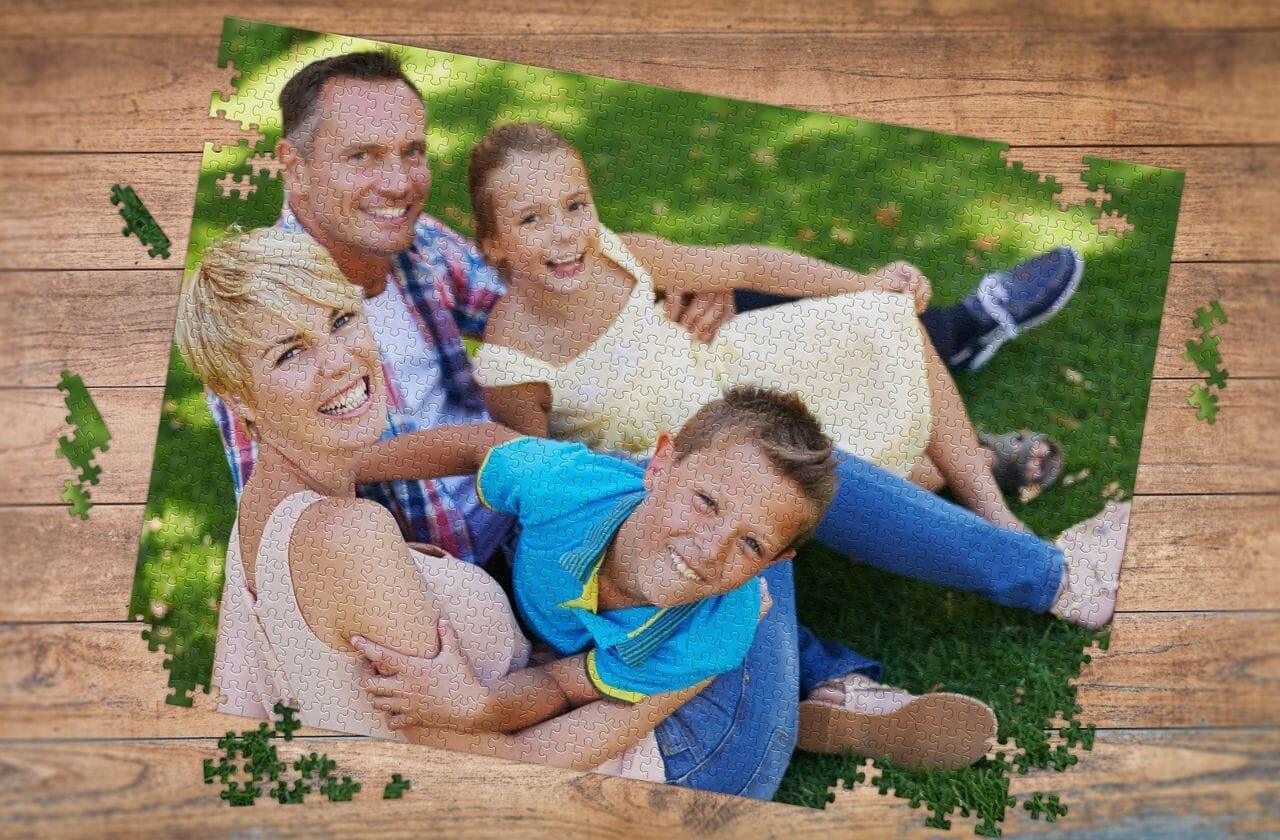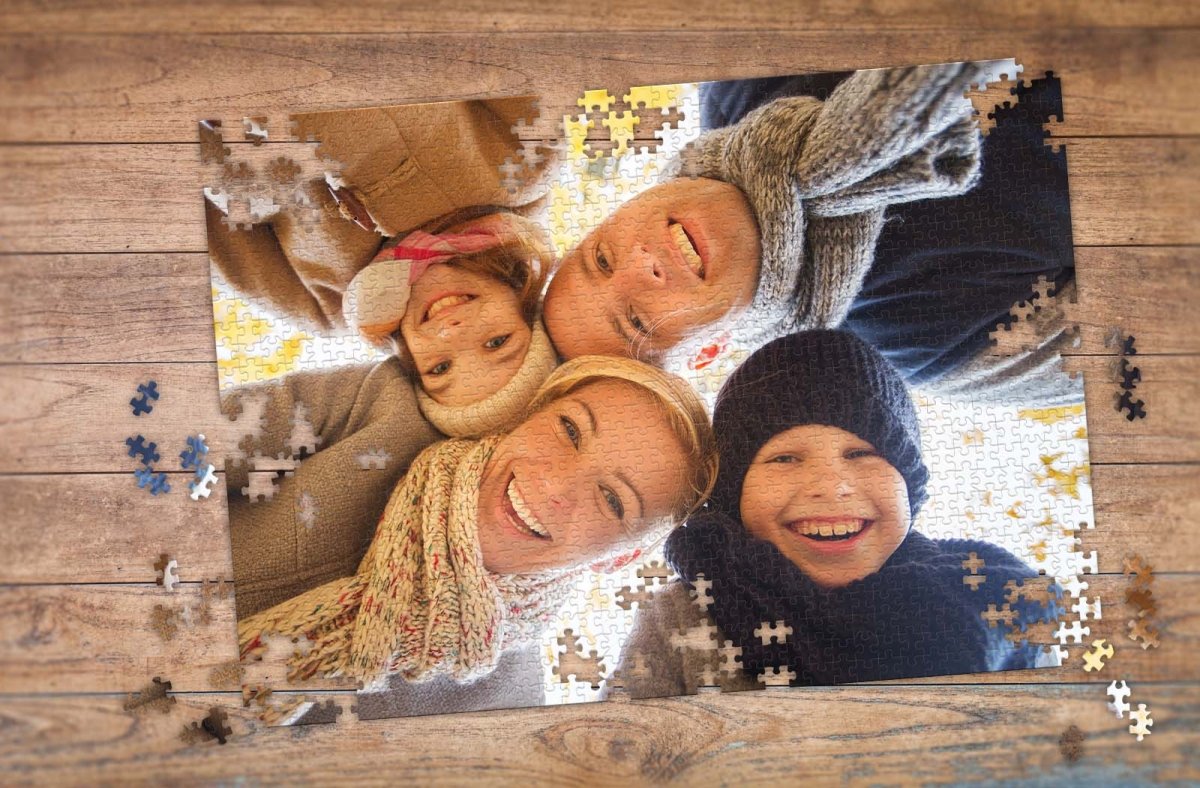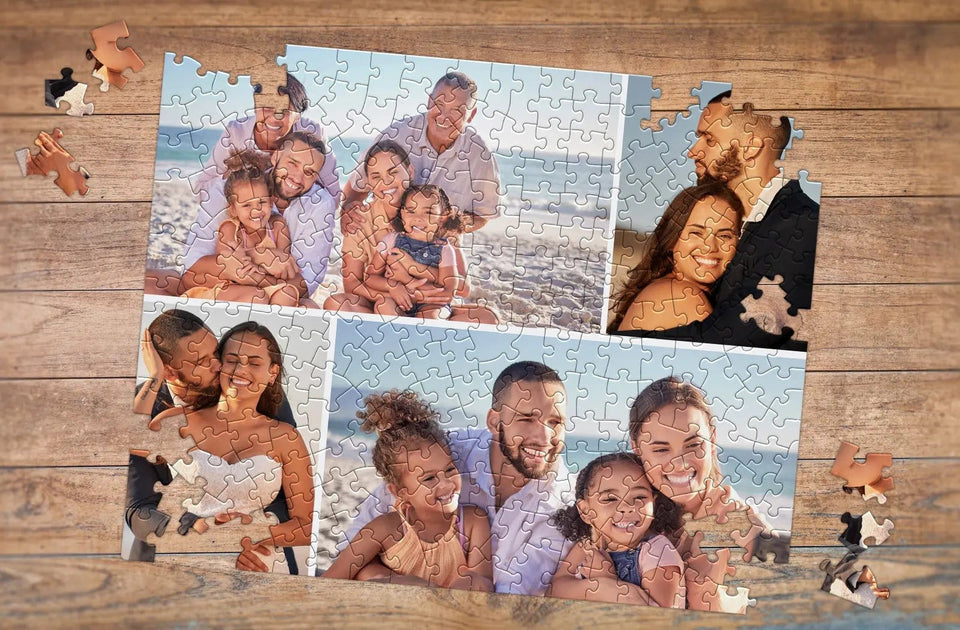You probably already know, or have guessed, that the number of puzzle pieces can indicate a puzzle’s difficulty level. Whether you want to grab a puzzle straight off the shelf or have decided to make a custom jigsaw puzzle, odds are, you’re paying close attention to the piece count. But how do you know what age a particular puzzle piece count is best for?
Many people ask themselves this question, particularly when it comes to 1,000-piece puzzles. Some see them as an exciting challenge, while others view them as an overwhelming time commitment. But what age is a 1,000-piece puzzle for? We’re here to help you answer that question.
What Age Is a 1,000-Piece Puzzle For?
Most 1,000-piece puzzles are recommended for ages 12 and up. By the age of 12, most children have developed the spatial reasoning and cognitive and motor skills necessary for complex puzzles.
Usually, 1,000-piece puzzles have large dimensions, which require prolonged focus and patience, which older children, teens, and adults can manage more effectively. Puzzles with 1,000 pieces also require precise motor control to handle and fit the small pieces, which is more refined in older children and adults.
That said, a person’s ability to solve a 1,000-piece puzzle also depends on their experience, cognitive skills, patience, and determination. With the proper guidance and support, even younger children can enjoy the challenge and benefits of puzzles this size.
If your goal is to tackle a more challenging puzzle with a child, finding a subject matter that’s interesting to them can keep them engaged. For instance, consider making a photo collage puzzle with them — they can select their own personal or favorite photos, adding a personal element.
Puzzle Difficulty Levels For Different Age Groups
To better understand who can enjoy different puzzle piece counts, it’s helpful to break down the general difficulty levels of different puzzles:
|
Puzzle Type |
Piece Count |
Recommended Age/Skill Level |
|
Beginner Puzzles |
48-100 pieces |
Young children and puzzle newcomers |
|
Intermediate Puzzles |
252-500 pieces |
Older children, teens, and casual puzzle solvers |
|
Advanced Puzzles |
1,000+ pieces |
Teens, adults, seniors, and seasoned puzzlers |
Benefits of 1,000-Piece Puzzles for Different Age Groups
Puzzles offer mental stimulation and emotional satisfaction across all ages. Let’s look at how different age groups benefit from working on 1,000-piece puzzles.
Children Under 12
While 1,000-piece puzzles are generally recommended for those 12 and older, younger children can still enjoy them with guidance and support from parents or educators. Working on a puzzle together can help develop essential skills, such as:
- Enhanced Problem-Solving: Puzzles sharpen critical thinking and help children approach problems methodically.
- Memory Improvement: Remembering where pieces might fit strengthens memory and recall abilities.
- Increased Patience: Completing a puzzle teaches patience and the importance of taking the time to solve a challenge.
Teens (12-18)
Teens have the ability to handle complex puzzles, and solving them can be an excellent way to engage in screen-free activities while honing essential cognitive skills like:
- Improved Spatial Reasoning: Puzzles enhance spatial awareness, helping teens think more clearly and logically about how objects relate to each other.
- Persistence and Perseverance: Tackling large puzzles teaches perseverance, which can translate into other areas of life like schoolwork or sports.
- Boosts Problem-Solving Skills: Completing puzzles helps teenagers develop critical thinking and problem-solving abilities as they work through challenges to find the right pieces, which can also enhance their academic and personal decision-making skills.
Adults and Seniors
Puzzles may help adults and seniors maintain their cognitive function. Puzzles can also be a relaxing pastime or low-key hobby in the evenings and on weekends. Some people may find an extra layer of enjoyment in creating personalized puzzles — keepsakes that let them hand-select family photos or meaningful images associated with favorite memories, making the experience even more engaging. Benefits include:
- Mental Stimulation: Puzzles can help slow cognitive decline in adults and seniors by keeping their brains active and engaged.
- Stress Relief: Engaging in puzzles provides a calming, meditative effect, helping to reduce stress.
- Sense of Accomplishment: Completing a challenging puzzle can boost your self-esteem and provide a sense of satisfaction.
Summary of Age Recommendations and Benefits
|
Age Group |
Benefits |
|
Children Under 12 |
Cognitive development, improved problem-solving, and memory enhancement (with guidance). |
|
Teens (12+) |
Enhanced problem-solving, spatial awareness, patience, and perseverance. |
|
Adults |
Mental stimulation, stress relief, and a sense of accomplishment. |
|
Seniors |
Cognitive maintenance, relaxation, mental and emotional well-being. |
Choosing the Right Puzzle for Different Age Groups
For those new to puzzles, starting with a lower piece count and gradually increasing difficulty is important. This progression helps build the confidence and skills to tackle more giant puzzles. If your goal is to work up to a puzzle of 1,000 pieces or more, knowing how long it takes to complete a 1,000-piece puzzle can help you set realistic expectations and goals.
For young children under 12, begin with puzzles containing 48 to 252 pieces. These are manageable and will help them develop basic puzzle-solving skills.
If you have teens, (12-18), you can move on to puzzles with 252 to 1,000-pieces. This puzzle count piece range should offer an achievable challenge.
The puzzle’s theme and image are also crucial for keeping the solver engaged:
- For children under 12: For younger puzzlers, choose bright and colorful images that capture their attention, like cartoon characters, animals, or fantasy worlds. Or help them make their own custom-made puzzles about whatever interests them.
- For teens (12-18): Teens might enjoy more intricate and complex designs, such as cityscapes, abstract art, or famous landmarks.
- For adults and seniors: Adults tend to prefer puzzles with serene or nostalgic images, while seniors might enjoy nature scenes, landscapes, or art reproductions.
Encouraging Puzzle-Solving in Children
Puzzles can be a valuable tool for developing important cognitive and problem-solving skills in children. Whether you're a parent or educator, introducing puzzles in a fun and supportive way can help foster a lifelong love for this brain-boosting activity.
- Incorporate their interests: Choose puzzles that feature your child’s favorite characters, animals, or themes like nature or superheroes to maintain their engagement.
- Use positive reinforcement: Celebrate small achievements, such as completing a section, to keep them motivated throughout the puzzle-solving process.
- Set a routine: Establish regular “puzzle time” as part of your family activities. Not only does this help develop their cognitive skills, but it also strengthens family bonds.
- Extend the fun: Once the puzzle is completed, consider framing the puzzle to proudly display their hard work.
Tips for Puzzle-Solving Success
If you or your child are new to puzzles, here are some helpful tips to ease the journey into puzzle-solving:
- Start with the edges: Building the border first provides a clear framework and makes the process more manageable.
- Sort by colors and patterns: Grouping pieces by similar colors or patterns can make finding matching pieces easier and quicker.
- Work in small sections: Focus on completing one part of the image at a time rather than being overwhelmed by the whole puzzle.
Frequently Asked Questions
How long does it take to complete a 1,000-piece puzzle? The time it takes to complete a 1,000-piece puzzle can vary, but on average, it may take between 10 and 16 hours, depending on experience level and the puzzle’s complexity.
Can younger kids do 1,000-piece puzzles? Yes, younger children can complete 1,000-piece puzzles with guidance from adults. Starting with smaller, easier puzzles, however, can help them build the skills needed for larger puzzles.
Are 1,000-piece puzzles good for brain health? Absolutely! For adults and seniors, puzzles provide cognitive stimulation, which can help maintain brain function and reduce the risk of cognitive decline.








